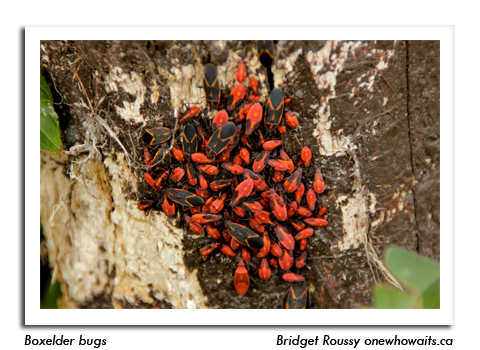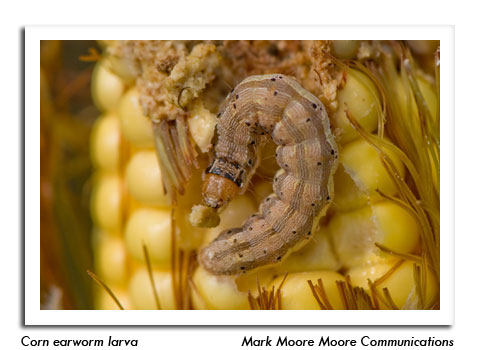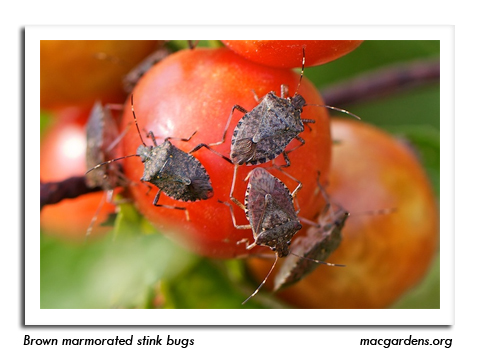
 |
|
|
Looking Ahead
Volume 61 Number 18 Date 09/01/2016 FALL PESTS - Nuisance insects including the boxelder bug, brown marmorated stink bug, multicolored Asian lady beetle, and western conifer seedbug will begin aggregating on warm southern and western exposures of buildings later this month in advance of their indoor invasion. Exterior insecticide treatments may temporarily deter insects from entering homes, but exclusion measures such as sealing cracks around windows, doors, siding and other openings are preferred. Insecticides should be applied by a licensed pest control technician and considered only for severe infestations. Fall nuisance insects do not reproduce inside the home or cause structural damage. CORN EARWORM - Migrants arrived in substantial numbers for the third consecutive week. Another 2,865 moths were captured in pheromone traps during the period of August 25-31, for a cumulative total of 6,372 moths in 17 traps since the primary migration began earlier this month. The weekly high count of 1,961 moths was registered near Ripon in Fond du Lac County. Sweet corn growers are advised to maintain CEW scouting and management programs as long as moth activity persists and green silks are available for oviposition. BROWN MARMORATED STINK BUG - This new invasive pest has been trapped in Dane and Rock counties this summer and is now established in south-central Wisconsin. Similar to the multicolored Asian lady beetle and boxelder bug, BMSB clusters on the exteriors of buildings in autumn in search of protected overwintering sites. Reports from Mid-Atlantic States where BMSB is a severe pest of fruit, field and vegetable crops indicate that BMSB usually develops from a household nuisance into a significant agricultural pest over a period of 5-10 years. To date, there has been no official confirmation of fruit or agronomic crop injury in Wisconsin. Any swarms of stink bugs noticed this fall should be reported to the DATCP Pest Survey Program at 1-866-440-7523. NEW STATE RECORD - The UW-Madison Insect Diagnostic Lab and DATCP have confirmed the first detection in Wisconsin of the two-banded Japanese weevil (Pseudocneorhinus bifasciatus), a destructive insect pest of over 100 landscape plants. Several specimens were collected from ornamental plants at a Dane County residence on August 5. This weevil was first reported in the U.S. near Philadelphia in 1914 and is thought to have been introduced with infested nursery stock from Japan. Although P. bifasciatus has invaded much of the eastern U.S. in the last 100 years, it has not been previously reported from Wisconsin. The weevils in Dane County were observed on columbine, coral bells, Japanese anemone, ligularia, pulmonaria, Siberian bugloss, snow-on-the-mountain, spirea, rock iris and various weeds. -- Krista Hamilton, DATCP Entomologist 



|
|
|